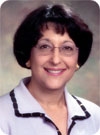Wrong Wound Care Treatment: Liability
 Wrong wound care treatment liability issues affect many medical malpractice cases. Many wound care clinicians remember the “good old days” when wound dressing product selection simply involved choosing between a handful of products that were essentially variations on the same theme. There was gauze, impregnated gauze and filled gauze pads.
Wrong wound care treatment liability issues affect many medical malpractice cases. Many wound care clinicians remember the “good old days” when wound dressing product selection simply involved choosing between a handful of products that were essentially variations on the same theme. There was gauze, impregnated gauze and filled gauze pads.
In the earlier 20th century, clinicians added antimicrobial solutions, creams and ointments (like Dakin’s solution developed during World War I and silver sulfadiazine developed in the 1960’s) and the wound care formulary was limited and simplistic.
Fast forward to the 21st century and wound care clinicians are confronted with a totally different situation: hundreds of products, scientific rationale for moist interactive dressings and an emerging evidence-base for product selection.
Pressure ulcer product selection
Current wound care expertise encompasses numerous dressing-related skills including:
- Treating the cause of the wound and addressing patient centered concerns to set the stage for local wound care
- Properly assessing the wound and identifying the dressing requirements
- Selecting dressings based on their form and function for an individual wound’s needs
- Meeting setting-specific requirements for dressing change frequency and maintenance
- Addressing formulary or healthcare system availability as well as reimbursement requirements
Wound care product selection today must be as sophisticated and as evidence-based as possible. Wound dressing product selection process is based on three principles:
- Holistic Perspectives
- Interprofessional Considerations
- Patient-Centered Concerns
Selecting appropriate wound dressing products and supportive care to maximize healing and patient outcomes is a complex process. Dressing and local wound care options based on science and best practices must be filtered by clinical experience and must be consistent with patient preferences, caregiver requirements and setting/access issues.
Additionally, effective dressing selection and local wound care planning involve the perspectives of the entire interprofessional team.
Knowing the performance parameters of dressing categories/ individual products and matching these attributes to an individual’s wound can optimize the healing process. But dressings are only one piece of the puzzle. Dressings alone will not promote wound healing, unless the underlying cause(s) for the wound are also addressed (e.g. treatment of the wound cause, blood supply, nutrition, patient centered concerns, local wound care etc.). As the wound changes, the plan of care must change and dressing products may have to be changed.
Appropriate pressure ulcer dressing product selection
- Optimizes the local wound healing environment
- Reduces local pain and suffering
- Improves activities of daily living and quality of life
Wrong Wound Care Treatment can
- Cause the wound status to deteriorate (e.g. wound margin maceration, increased
risk of superficial critical colonization or deep infection, skin stripping). - Increase local pressure or pain especially at dressing change (dressing removal
and cleansing). - Increase costs with the need for frequent dressing changes or the selection
of an inappropriate advanced or active dressing.
National and international wound care guidelines and best practice documents mean that there is no longer a local standard of care. No matter where nurses and doctors practice, they will be held to national/international standards of wound care practice. Some experts have argued that the selection of the wrong dressing is just as problematic as the administration of the wrong drug and the clinician would be just as liable in a court of law.
If dressings can be shown to delay the healing process (e.g. wet-to-dry gauze dressings in a wound that requires moist wound healing, pain from inappropriate adhesives, failure to treat critical colonization that can lead to deep infection), their use might be deemed negligent by a jury in a court case. Wrong wound care treatment can get healthcare professionals in trouble.
Modified with permission from Dr. Diane Krasner, coauthor of Wound Dressing Product Selection
Dr. Diane Krasner provides an analysis of the liability associated with pressure sore development and treatment.

